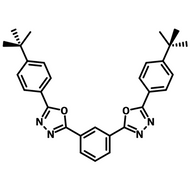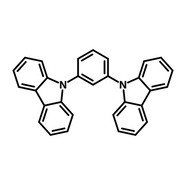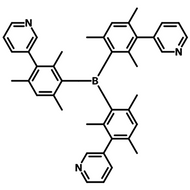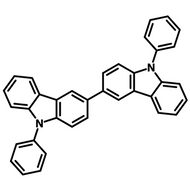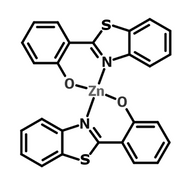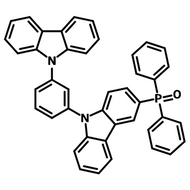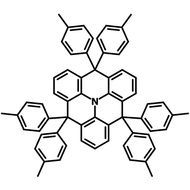Phosphorescent Host Materials
Host materials for second generation phosphorescent organic light-emitting diode (OLED) materials. They support materials that use phosphorescence as their primary light-emitting mechanism, relying forbidden triplet-singlet transitions to achieve high efficiency. By harnessing triplet state electrons, phosphorescent materials have a high theoretical efficiency of up to 75%.
OLEDs incorporating these materials are commonly referred to as PhOLEDs (phosphorescent OLEDs), known for their superior efficiency and performance in next-generation display and lighting technologies.
The key characteristics of phosphorescent host materials include:
Phosphorescent host materials are widely used in PhOLEDs, offering high efficiency, low power consumption, and the ability to produce vibrant colors across the visible spectrum. By addressing challenges such as achieving high triplet energy and minimizing exciton losses, phosphorescent hosts continue to advance OLED technology.
Explore our range of high purity phosphorescent host molecules, such as CBP and T2T, which are compatible with a range of emitters for exciting PhOLED developments.
Jump to: Browse all Phosphorescent Host Materials | Resources and Support
Browse all Phosphorescent Host Materials
Related categories: Charge transport layer materials, Dopant materials, Host materials, TADF materials, OLED materials
Filter by purification technique:
Resources and Support
Fluorescence and phosphorescence are types of photoluminescence. Photoluminescence refers to radiative emissions where the absorbance of a photon is followed by the emission of a lower energy photon.
Read more...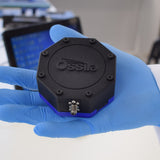 Photoluminescence
Photoluminescence
Photoluminescence happens when a material emits light after absorbing a photon from an external light source. Electrons in the material are excited into their higher energy states. As they relax, the electrons will then emit photons of a lower energy.There are several ways of categorizing photoluminescence.
Read more...In PhOLEDs, charge carriers are injected from the electrodes into the organic layers, where they recombine in the emissive layer to radiatively emit phosphorescence. Find out more.
Read more... OLED Testing Guide
OLED Testing Guide
This guide gives you an overview of what to consider when characterising an OLED, as well as tips for their measurement.
Read more...



